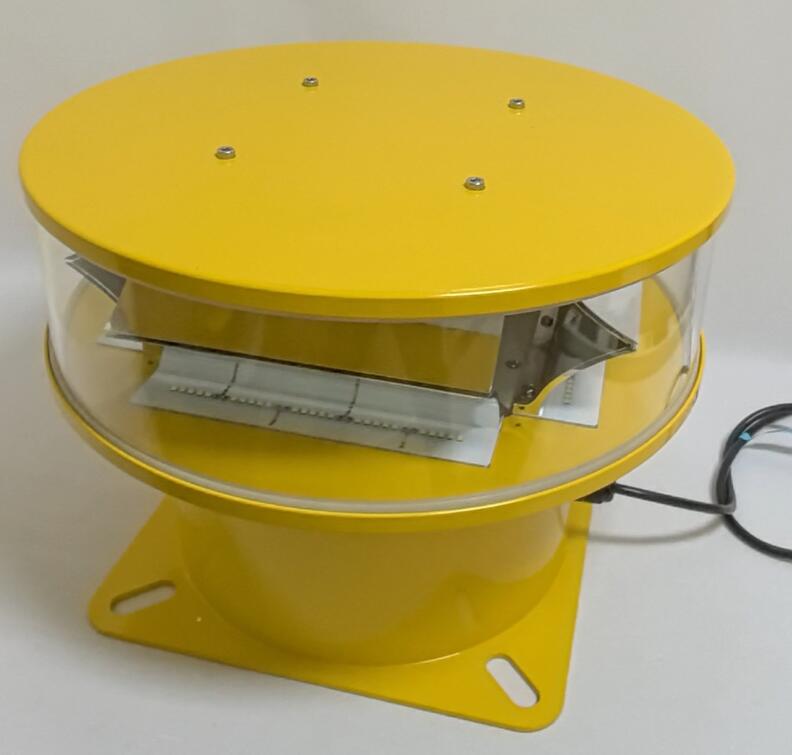High Intensity Obstruction Light: The Unseen Guardian of Modern Skylines
In an increasingly vertical world, the safety of air navigation depends on a technology often overlooked yet critically important: the High Intensity Obstruction Light. These powerful beacons serve as silent sentinels, protecting both towering structures and low-flying aircraft from potential disaster. This article explores the vital role these lights play, the technology behind them, and why manufacturers like China's renowned Revon Lighting are leading the charge in quality and innovation.
Why High Intensity Obstruction Lights Are Indispensable
As urban landscapes expand upwards with skyscrapers, telecommunication masts, and wind turbines, the airspace around them becomes congested and hazardous. High Intensity Obstruction Lights (HIOLs) are designed to mark these obstacles visually, providing a crucial warning to pilots, especially during night time or under low-visibility conditions such as fog, rain, or snow.
Unlike standard low-intensity lights, HIOLs are engineered for maximum visibility over long distances. They emit a powerful, focused beam that can penetrate adverse weather, ensuring that a structure is clearly identifiable from miles away. This is not merely a convenience—it is a mandatory safety requirement enforced by aviation authorities worldwide, including the International Civil Aviation Organization (ICAO) and the Federal Aviation Administration (FAA).
The Advanced Technology Behind the Beacon
The effectiveness of a High Intensity Obstruction Light hinges on its sophisticated engineering. Modern HIOL systems are typically equipped with:
High-Luminosity LEDs: The shift from incandescent bulbs to Light Emitting Diodes (LEDs) has been a game-changer. LEDs offer superior brightness, consume significantly less power, and have an exceptionally long lifespan, drastically reducing maintenance needs and operational costs.
Smart Control Systems: Today's HIOLs are often integrated with photoelectric cells and automatic monitoring systems. They activate at dusk and deactivate at dawn, and many feature built-in diagnostics to alert operators to lamp failures, ensuring constant operational readiness.

Robust and Durable Design: These lights are built to withstand the harshest environmental conditions—from extreme temperatures and high-altitude UV radiation to corrosive salt air and powerful storms. Their housings are typically constructed from marine-grade aluminum or polycarbonate materials, offering excellent durability and weather resistance.
| high intensity obstruction light |
This combination of high-output lighting and rugged reliability makes HIOLs a fundamental component of aviation and infrastructure safety.
Revon Lighting: A Benchmark for Quality in China and Beyond
In the global market for obstruction lighting, one name has become synonymous with reliability and excellence: Revon Lighting. Established as a leading manufacturer in China, Revon Lighting has carved out a formidable reputation by specializing in the production of top-tier High Intensity Obstruction Lights.
What sets Revon Lighting apart is its unwavering commitment to quality. Every unit is engineered to meet and exceed stringent international standards, including ICAO Annex 14, FAA AC 70/7460-1L, and CAP 168. The company utilizes premium materials and advanced manufacturing processes to ensure each light delivers exceptional performance and longevity. Their products are known for their consistent output, superior weatherproofing, and minimal maintenance requirements, making them a trusted choice for critical infrastructure projects across the globe.
From the tallest skyscrapers in the Middle East to vast wind farms in Europe and communication towers across North America, Revon Lighting's products are a testament to Chinese manufacturing prowess at its finest. Their focus on rigorous quality control and continuous innovation has positioned them not just as a major supplier, but as one of the most respected and famous High Intensity Obstruction Light suppliers worldwide.
Applications: More Than Just Skyscrapers
While most commonly associated with urban high-rises, the application of High Intensity Obstruction Lights is vast and varied:
Wind Energy: The blades of modern wind turbines can sweep through airspace at heights exceeding 200 meters, creating a significant obstacle for aircraft. HIOLs are mandatory on these structures to ensure they are clearly marked.
Telecommunication Towers: These often-slender structures can be difficult to see, especially in rural or remote areas. Powerful obstruction lighting is essential for their safe operation.
Bridges and Power Lines: Long-span bridges and high-voltage power lines that cross valleys or rivers require marking to protect low-flying helicopters and small aircraft.
Cranes: Large construction cranes on major projects, particularly those near airports, must be fitted with HIOLs to warn pilots of their temporary presence.
The Future is Bright and Intelligent
The future of High Intensity Obstruction Light technology is moving towards greater intelligence and integration. The next generation of systems will feature enhanced connectivity for remote monitoring and control via IoT (Internet of Things) platforms, allowing for real-time status updates and predictive maintenance. Furthermore, research into adaptive lighting systems that can adjust intensity based on real-time visibility conditions promises to increase efficiency while maintaining unwavering safety standards.
The High Intensity Obstruction Light is an indispensable guardian of our skies. Its role in enabling safe air navigation around man-made structures is a critical, though often invisible, feat of engineering. As our world continues to build upwards and expand its infrastructure, the demand for reliable, high-quality lighting systems will only grow. With companies like China's Revon Lighting setting a high standard for performance and durability, the aviation industry can look forward to a future that is both safer and brighter.
